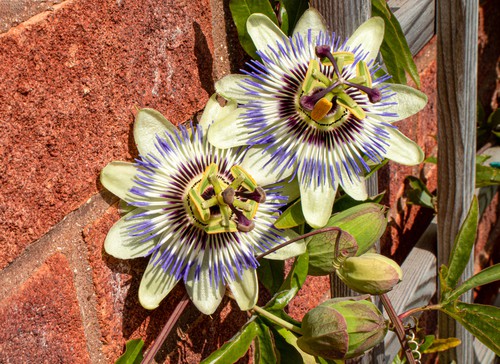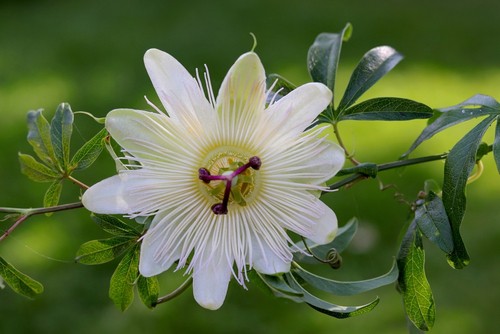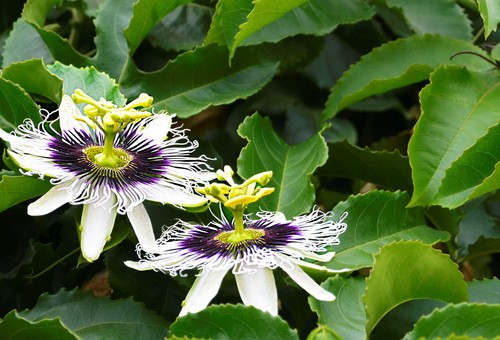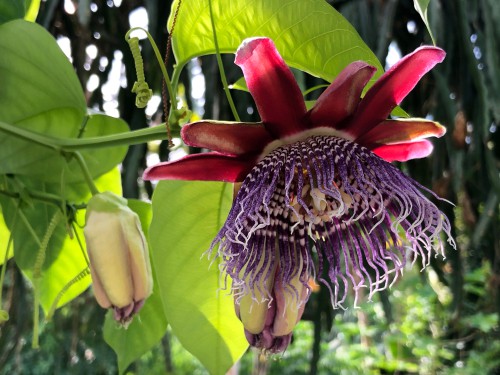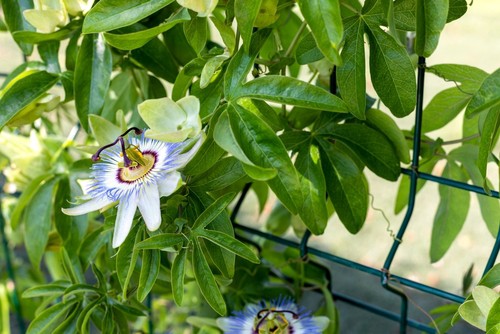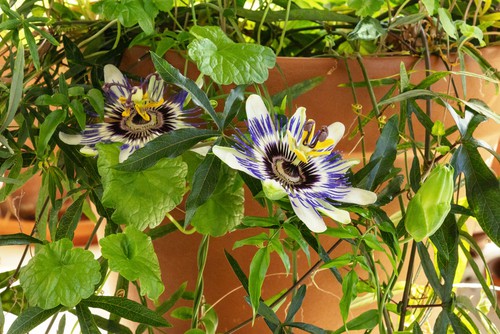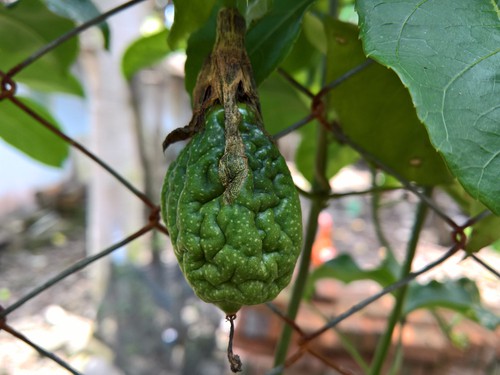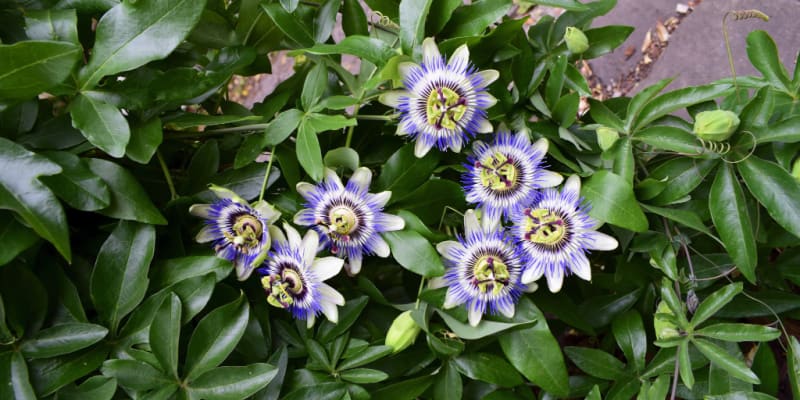
Passiflora caerulea – Growing and caring for passion flowers (Passion flowers)
Our site is reader supported, this means we may earn a small commission from Amazon and other affiliates when you buy through links on our site.
Passion flowers (the most common being passiflora caerula) are usually grown as hardy border climbers or more tender conservatory plants for the less hardy varieties. Personally, I have always grown them as hardy plants outdoors in more sheltered positions. You can also grow the variety that produces the edible passion fruit although the taste is something most will not take a liking to. In my guide, I cover what you need to know when growing and caring for passion flowers of each of these types.
So that you know, the most popular and hardest passion flower is the blue Passiflora caerulea which is shown in the picture above. This is the one that most people will choose to grow, especially if growing outdoors, as it’s hardy to about -10C.
That being said, they ideally need a sheltered position and, if growing passion flowers in pots, should be brought into a cold greenhouse or at least give them some winter protection with some fleece and lagging around the pot to protect the roots.
Choosing your passion flower variety
Hardy passion flowers
The hardy type of passion flowers can grow outdoors with no issues and are usually at the back of borders. They need a fairly mild climate (urban or seaside) to remain hardy though or at least a more sheltered position. Hardy passion flowers usually come in blue (e.g. Passiflora caerulea) or white (e.g. Passiflora caerulea ‘Constance Elliot’) varieties, as pictured below. These are the two I usually grow and are often for sale at most garden centres and nurseries. As these plants grow to be tall, train them up a trellis, wall, fence or other vertical garden structure.
Tender passion flowers
Tender passion flower varieties need to grow in a warm conservatory or greenhouse to be successful. These types come in a wide range of colours, from warm colours such as reds and yellows to cooler purples and blues. The flower shapes vary as yellow from simple starts up to the complex ‘jellyfish-like’ structure. These are, without doubt, some of the most spectacular varieties.
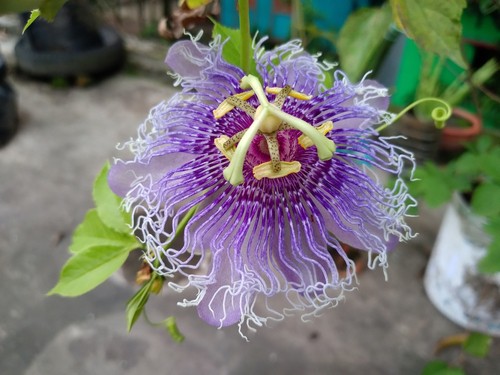
If you don’t have access to a conservatory or greenhouse, you can try growing the tender varieties indoors. But be aware that they need a lot of space, growing up to 3m in height. If you grow them in pots, you can also place them outdoors in summer.
Edible passion flowers
Two varieties of passion flower produce edible passion fruit. The most popular, and most successful, is Passiflora edulis. Your second choice is Passiflora quadrangularis. You probably need to go to a specialist supplier to obtain these varieties. As these are tender plants, they need to be in a greenhouse for their best growth.
Growing passion flowers outdoors
While passion flowers don’t need extremely precise conditions to grow successfully, they do have preferences as to light, soil, watering and some maintenance requirements. Below are what I consider the best growing conditions for them.
Where to plant and position passions flowers
Passiflora caerulea like to grow in a sheltered location, away from winds, heavy rain and maybe more importantly, hard frost in winter. Look for a south or west facing wall or fence for their protection. In general I always say, the more sun, the better. However, one of the passion flowers I have grows in a position where it only really gets morning sun, and it grows very well, but this one is also planted in the ground.
Plant in full sun or partial shade to get the most out of them
Plant your passion flowers in locations they receive full sun to partial shade. They prefer sun for four to six hours a day and preferably morning sun. They seem to grow better when they get some shade in the afternoon hours, especially in hotter environments.
Make sure your soil is rich and moist but well draining
Passion flowers like rich and moist soil but it should drain well and not become water logged. Thery also seems to grow slightly better in slightly acidic soil. If the soil in your chosen location for these plants isn’t up to scratch, adjust it by adding horticultural grit for extra drainage and maybe add some ericaceous compost to increase the acidic level but also improve the soil. Just remember that adding ericaceous compost to the soil is just a temporary solution as the soil reverts to its original pH over time.
Adding compost into the planting hole adds some needed nutrients for the plant. And mulching around the plant on the surface (but not too close to the stem) serves to keep the soil cool and help with water retention.
Providing support for passion flowers
Something often overlooked is that hardy passion flowers can grow to over 3 meters tall, that over 10ft tall, but they can be pruned, more on this further down. Passion flowers actually climb by putting out tendrils which need something to wrap around. This can be with a trellis, a fence, a wall or something else to stick to so they can cling and grow straight and tall. I usually just attach a trellis or wire to my wall or fence, and it works well. This at least gets them started with they are young and first planted.
Watering passion flowers
Just after planting the passion flowers (see How to take cuttings from passion flowers to propagate them), make sure to water them well. But don’t let the soil become water-logged. Water regularly during the summer but reduce this frequency going into the autumn in preparation for the winter. Once established and for those grown in the plants, they usually don’t need watering until we have a really dry prolonged spell. If you grow them in pots, they will need water regularly.
Feeding passion flowers
If your soil is rich and full of nutrients, then you don’t need to give extra feed to passion flowers, they will actually grow well in poor soils. However, if the passion flowers are looking a bit weak and sickly such as yellowing leaves or dropping leaves, give them a quick feed with a general fertiliser, I usually just feed them with a liquid feed or apply some bone meal to the soil in spring. A general fertiliser has equal proportions of nitrogen, phosphorus and potassium.
Your yearly fertilising is best done in the early spring before the new growth emerges and then every six weeks or so, if needed, through the summer. I like to produce feed just before the flowers open to give them a little boost.
Overwintering passion flowers
Hardy passion flowers should be just fine left alone if planted in the ground and in a more sheltered position. I have always just left them as they are, maybe adding a little mulch around the base of the plant to give their roots a little more protection as well as help the soil retain moisture better.
If you grow them in pots, I recommend wrapping the stems of your passion flower plants with horticultural fleece if possible and wrapping the pot in lagging or bubble wrap to help give the roots some extra protection. If you can move them into a greenhouse, then even better. They’re only hardy to a certain extent and are much more at risk if grown in pots than in the ground.
Pruning passion flowers
The good news is passion flowers don’t require a lot of pruning and will happily go a few years without any pruning if you want. Generally, you only want to highly prune them in summer after flowering. I usually prune back the current year’s growth to within two buds of the previous year’s growth. These usually leave the main framework and then growth with two buds on from teh current year once pruned. If you prune too hard, they may not flower that year or if they door very poorly.
Now, if you want to rejuvenate an old passion flower and prune it back hard, you can do this in early spring, however, note that you might not get many or any flowers that year. Passion flowers flower on the current year’s growth.
I have an entire article, When and how to prune passion flowers, on this subject.
Growing passion flowers indoors
Growing passion flowers indoors, whether in a conservatory, greenhouse or your living room, entails growing them in pots. See my article on Growing passion flowers in pots and containers, for a great deal of information about this. The main thing to consider when growing indoors is that they get enough light.
Keeping your passion flower healthy
As with any plant, passion flowers are susceptible to some diseases and pests with the most common being aphids such as greenfly and whitefly, red spider mites and mealybugs. Plants grown outdoors are far less affected than those grown in a greenhouse or conservatory as the pests love the warm environment. I explain what the most common of these are and what to do about them in my Passion flower pests and diseases guide.
I cover the most common passion flower problems in Why are my passion flowers not blooming?, Why are my passion flower leaves turning yellow? and Why is my passion flower wilting?
